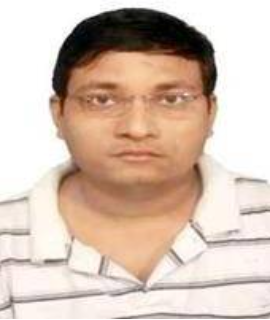Title : Roles of microbes (fungi) in the bioremediation of heavy metals at estuarine of marine confluence of West Bengal, India
Abstract:
The benthic environment at an ecotone, at the confluence of an estuary, named Subarnarekha with the sea; Bay of Bengal in West Bengal, India (21°33′ to 23°32′ north latitude and 85°9′ to 87°27′ east longitude) supports the lives of an array of microbes along with other benthic fauna in several niches of intertidal zones. Deposition and accumulation of bio-recalcitrant heavy metals in this biologically sensitive but productive saline habitat disrupt normal ecological balances by disrupt prime objective to study the eco-biological potential of benthic fungi in the processes of bio-accumulation and bio-removal of a persistent toxic substances such as heavy metals i.e. lead (Pb-II), cadmium (Cd-II), and mercury (Hg-II). One species Aspergillus penicillioides (F12), after being identified by the ITS genetic system (gene bank deposition with the number, MN210327) was found to exhibit the highest heavy metal tolerance activity. By exhibiting resistance against Hg (II) up to 200 ppm where such resistances were recorded as up to 1000 ppm. for Pb (II) and Cd (II) . The heavy metal binding regions of fungus were determined by FTIR, SEM, and EDEX analysis.
The studied fungal strain A. penicillioides was observed to release higher quantity of exopolysaccharide (EPS), which helps absorb heavy metals in maximum amount. In such context, EPS and biomass of fungal strain can be treated as biologically potential ingredients for the effective bioremediation of heavy metals from the soil-water interphase. This study also emphasizes the optimization of processes of different physicochemical parameters [pH, time (hours) and temperature (0C)] by employing Box-Behnken Design (BBD) of experiments with the prime objective of understanding the bio-absorption capability of an important heavy metal [lead (Pb II)] from Subarnarekha river estuary by EPS of Aspergillus penicillioids (MN210327). From statistical analysis (ANOVA) has revealed that the optimized bio-absorption (72.76%) of Pb (II) by EPS occurred at pH of 11 and temperature of 37.57 0 C, for a period of 8 hours. Based on the research findings, it has been hypothesized that benthic fungi by virtue of their sensitiveness and power of tolerances against ecological perturbations can play both as bio-remediator as well as bio-indicator organisms in the changing of ecological conditions which impose serious threats not only on larger aquatic floral and faunal components but on other such eco-potential microbes, necessitating to undertake sustainable eco-management of the entire aquatic ecosystem.
What will audience learn from your presentation?
- Explain how the audience will be able to use what they learn?
Ans: The audience learns about the heavy metal bioremediation activity of marine microbes
- How will this help the audience in their job?
Fungi act as bio-indicator species of heavy metal contaminated site. So, several researchers can detect the bio-indicator species of different field of research. Beside that heavy metal resistance microbes have huge industrial importance.
- Is this research that other faculty could use to expand their research or teaching?
Although several researchers are involved these types of research. Future researches about the development of effective heavy metal removal technology, such as fungal EPS based bio-remediation. In addition, the present research studies have recognized the prospective multidimensional application of benthic fungi for the reduction pollutants load, further investigations are required to find out more multi toxic metal tolerant fungi from the natural ecosystems in the waste management processes.
- Does this provide a practical solution to a problem that could simplify or make a designer’s job more efficient?
One advantage of this technology is the ability of the EPS to adsorb heavy metals (evenin low concentrations). This is important to meet the permissible standard for drinking water or the quality of effluents to be discharged into the surface water. Bioremediation has emerged as an efficient treatment option for water purification, yet numerous challenges and constrains with regard to its practical applications on a large commercial scale still prevail. . Besides, several modified biological approaches such as bioleaching, bioreduction, and bioflotation should also be evaluated with an assessment of their potential for metal recovery from industrial wastewater.
- Will it improve the accuracy of a design, or provide new information to assist in a design problem?
- List all other benefits.
- Heavy metal pollution in the environment and associated toxicity in living beings is of serious eco-environmental concern. The feasibility of bioremediation as a cost-effective and efficient technique should be explored.
- Recombinant DNA technology of metal-accumulating fungi and associated bacteria or algae with required traits could be a very valuable approach for the improved bioremediation, but associated risks should also be considered before field trial.
- The association of fungi and algae (mycorrhiza) could be an economically viable approach for bio-fertilizer production and thus, their use under strict monitoring can be recommended for agricultural applications with bioremediation.
- Bio-energy (hydrogen) production from wastewater bioremediation is a unique approach that not only reduces the pollution but also leads the generation of eco- friendly fuel. This technology must be further explored with the aim of achieving possible commercialization.
- The use of fungal derived nano-biocomposites may become an effective approach for the removal of toxic pollutants from aqueous solution.


